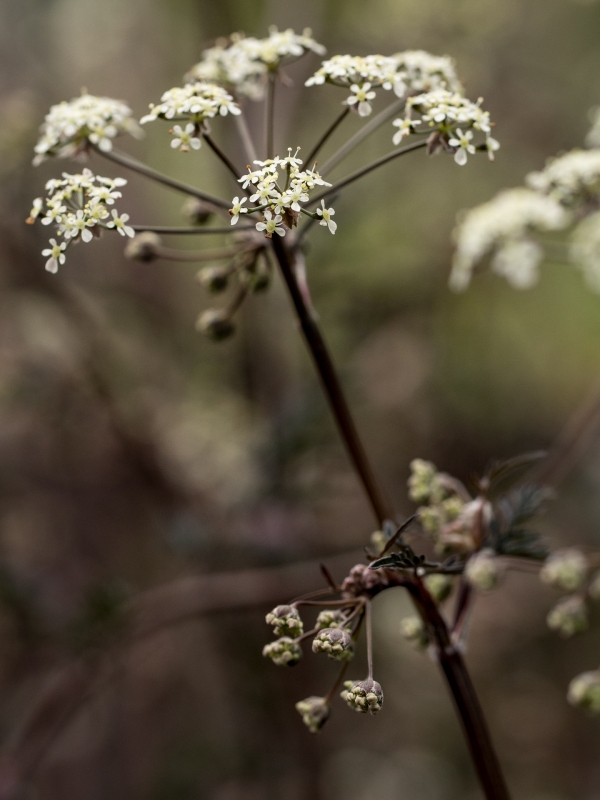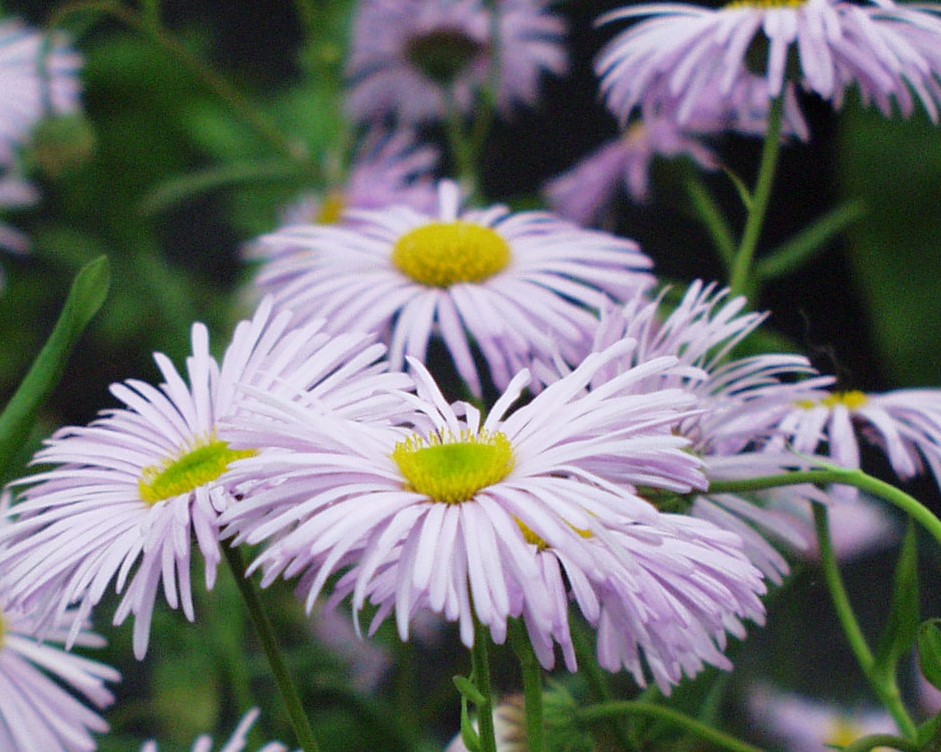Elevate the Everyday
Would you like everyone to say “wow! What’s that?” as they look round your garden?
One of the design tricks which is very effective and easy to use, is to make small changes to take the look of your plants from the ordinary to extraordinary.
But before you waste your time and money on exotic and unusual plants, take a look at the plants that do well in your own natural environment or which are garden stalwarts – but give them a “glow up”. Here, Claire Mitchell (The Garden Editor) shares her design tips for plants that will bring everyday decadence to your garden.
Honesty or Lunaria is a great wild-flower for a semi-shaded areas of the garden. It has pretty purple flowers followed by disc or moon shaped seed pods which are very decorative when allowed to dry. However, to raise it from the everyday you could instead use Lunaria annua ‘Chedglow’ which has mottled green and purple leaves and bright purple flowers.
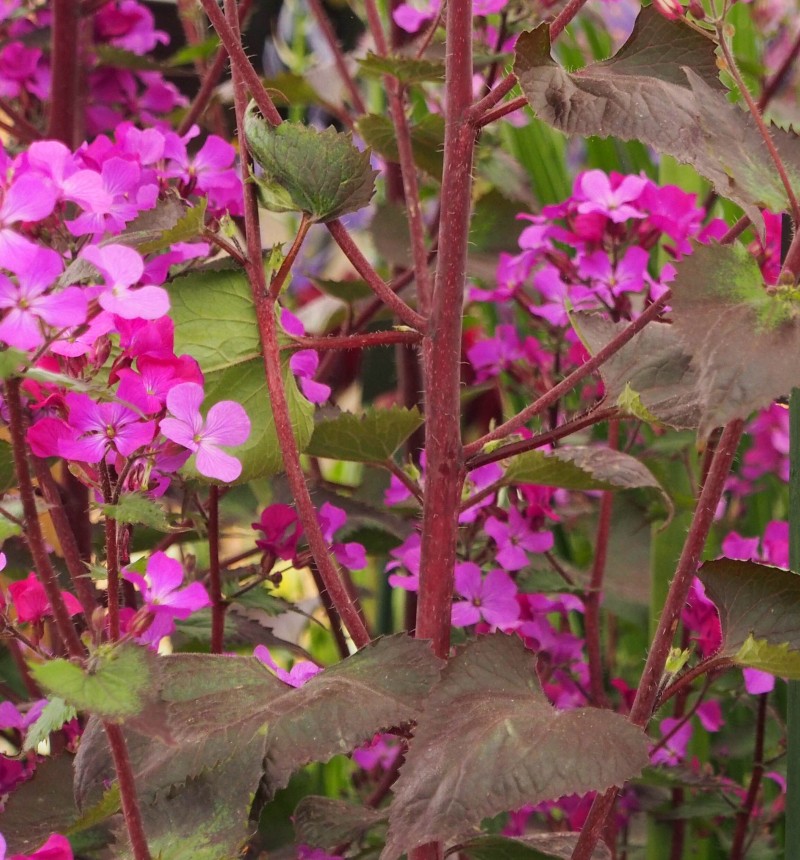
Another good plant to use in a shady or woodland type garden is Anthriscus or cow parsley. To elevate this plant, you can switch from the green leaved form to Anthiscus sylvestris ‘Ravenswing’, which has deep purple stems and foliage. The flowers are still frothy and beautiful in spring and early summer, but it also seeds true, so you can have it in swathes on a bank for instance. Any green leaved forms can just be pulled out helping you to maintain the colour. This is rightly a popular plant amongst designers for that tricky spring period before your summer perennials get going.
Another of Claire’s list of elevated plants is Achillea millefolium ‘Gloria Jean’. Achillea millefolium is found in the wild and is known as Yarrow and is usually yellow or off white. Breeders have now developed it in many colours and it is a great plant for sunny well-drained areas. These plants are often eaten by deer in the wild, so to get the best from the plant, cut it back hard after flowering, just the same as if it had been eaten by a deer and in just a short time it will re-shoot and flower again, giving you a long season of interest. Additionally, the compound heads of flowers are a favourite for pollinating insects such as bees and butterflies. Gloria jean is a soft strawberries and cream colour which is gorgeous with other pastel colours. Linking it to the wider natural environment will avoid your garden looking contrived.
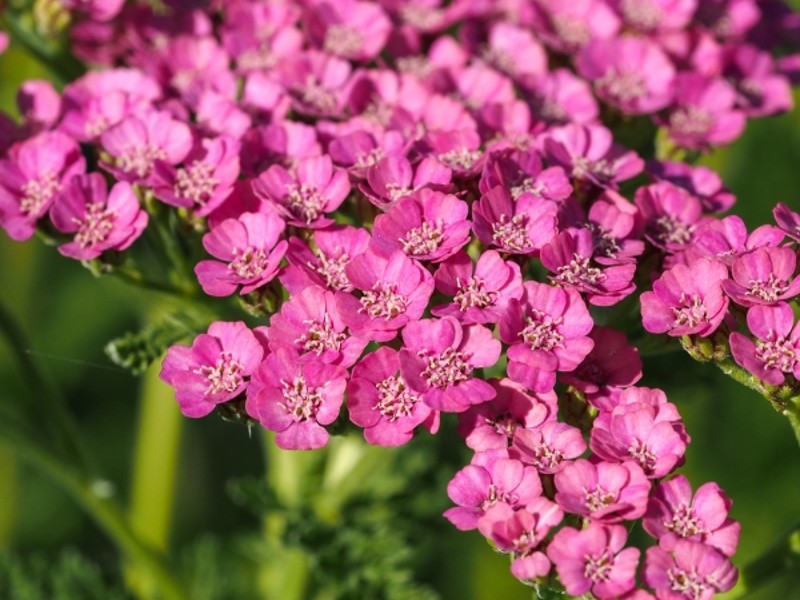
Linaria purpurea known as the Purple Toadflax gives you lots of verticality which is a good way of helping your garden to look full. If everything in your garden is low and round it can look very flat. You should always think and design in 3D, so adding lots of spires is a great way to add extra height, colour and movement. Linaria purpurea self-seeds all over the garden giving you plenty of new plants. If you want to elevate your every day, I would choose Linaria purpurea ‘Canon Went’ which is a vigorous form with lots of stems of glaucous leaves and many heads of baby pink, tubular flowers that are a draw for moths, butterflies and other pollinators. It’s happy in full-sun and part shade it will self-seed true to type if there are no different Linaria close with which it can cross pollinate.
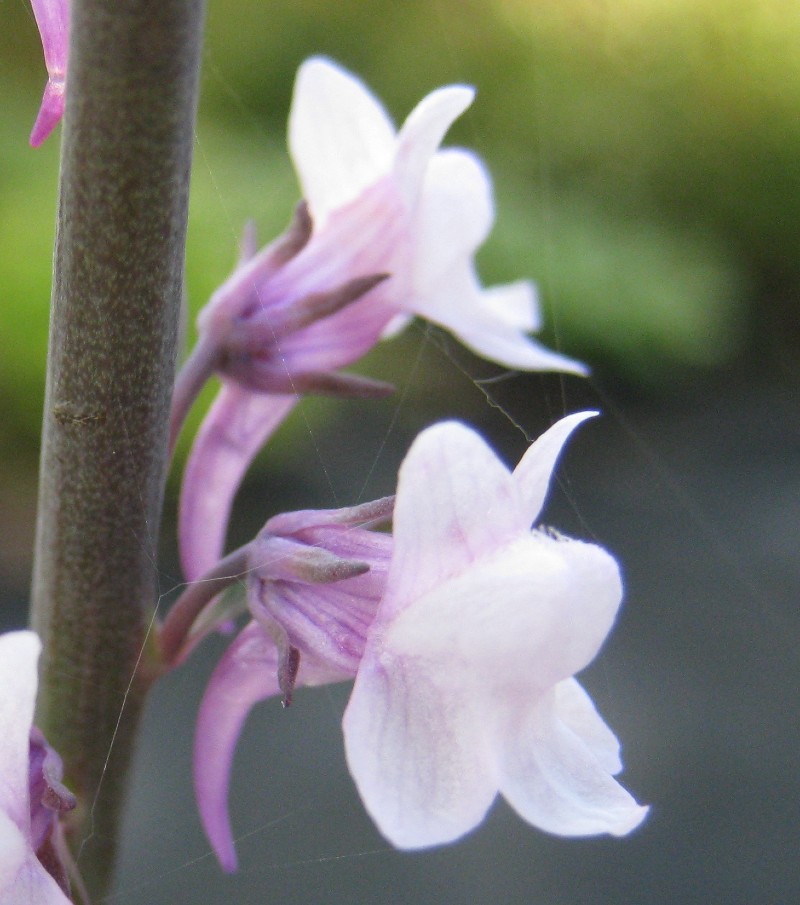
Salvia’ Hot Lips’ is a woody subshrub, quite hardy in the UK but also quite ubiquitous, so if you want to elevate your everyday and you like that two-toned look here are a couple of suggestions for you. Firstly, Salvia ‘Amethyst Lips’ I adore this plant. The smell is like a really posh perfume you can only get in the most exclusive stores, but also the two-tone colours on this plant, purple and white, make it much easier to place successfully. The colour of ‘Hot Lips’ can be very jarring, this is much better and your neighbours may well gasp and want to know what it is. Another alternative to ‘Hot Lips’ is Salvia’ Dysons Joy’, which has the same woody sub structure as the other two, but soft mid-pink flowers with pale pink lips. It combines beautifully with Penstemon, grasses and Achillea. These are excellent plants when you want to have something which gives a good haze of colour and flowers, with great scent, but is not what all your neighbours have.

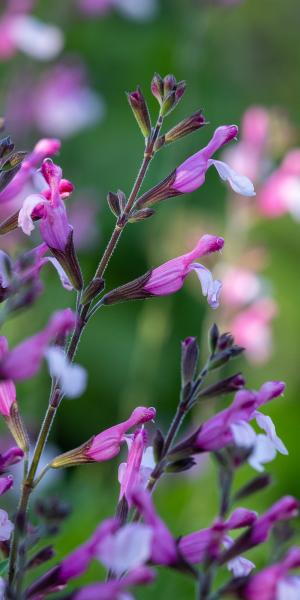
You may well know Verbena bonariensis, the beautiful, structural and excellent summer perennial that holds herself up in the wind without any need for staking. Pretty clusters of flowers at the top of each stem waft in the slightest breeze. However, it’s very common which isn’t a problem in itself, but if you want to elevate your every day I would swap it for Verbena officinalis ‘Bampton’. It has dark stems and foliage so has an impact right from the beginning of the season as it starts to grow and the deep colour looks great in the spring border. At the tips you have spires of pinkish-purple flower heads. The foliage is glossy purple which deepens in colour the more sun it gets. It produces mounds of colour throughout the beds as it also seeds true. It’s called Verbena officinalis ‘Bampton’ because it was found growing through the cracks in the pavement of a car park in the village of Bampton in Devon. It was sent to the RHS to verify its identity and was found to be a unique, naturally occurring variation and so is native only to the UK.
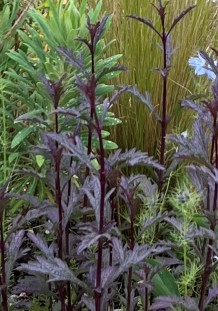
Many of you will be familiar with the Mexican fleabane, Erigeron karvinskianos ‘Profusion’, A frothy, low growing plant, ideal for sunny pots and edging that has pink and white daisy like flowers all summer. However, if you would like to elevate the everyday, you could upgrade to Erigeron ‘Lavender Lady’ which has all lavender coloured daisies and is the same height as its sister. Far less well known but providing a continuous stream of pale lilac daisies, it is not as bright as the previous form which means it tones in beautifully with soft muted stone paths or stands out against darker stone, brick and wood backgrounds. If you find you’re enchanted by the pale loveliness of’ Lavender Lady’ you can upgrade to the more statuesque Erigeron ‘Quakeress’ which grows to approx. 30cm tall and has lavender flowers up to 2cm across. If you combine the two in the same border you can echo the colour and form which adds continuity and makes your design appear considered and painterly.
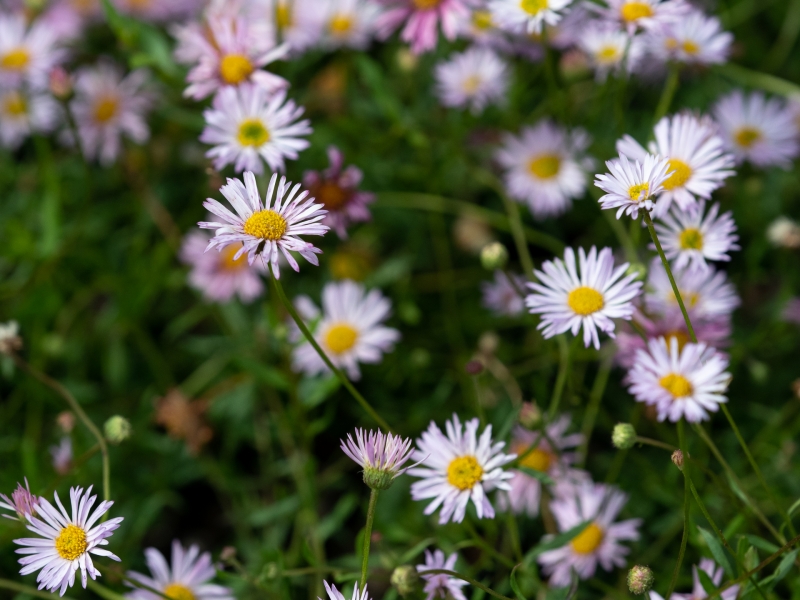
Claire Mitchell is 'The Garden Editor', a well respected horticulturist based in Overton. She also has worked with us at the nursery on Tuesdays during the Summer. Claire has a background in sustainability and led the legal team of the UK Government on renewable energy and climate change . She is also a trustee of the Chartered Institute of Horticulture. To view her website click on the following link Sustainable Gardening | The Garden Editor | Overton

